.jpg?impolicy=leadImage)
If your subfloor is damaged and needs replacing, expect the project to require a professional assessment and the proper materials.
Concrete is a common subfloor, but you’ll need to mind the moisture
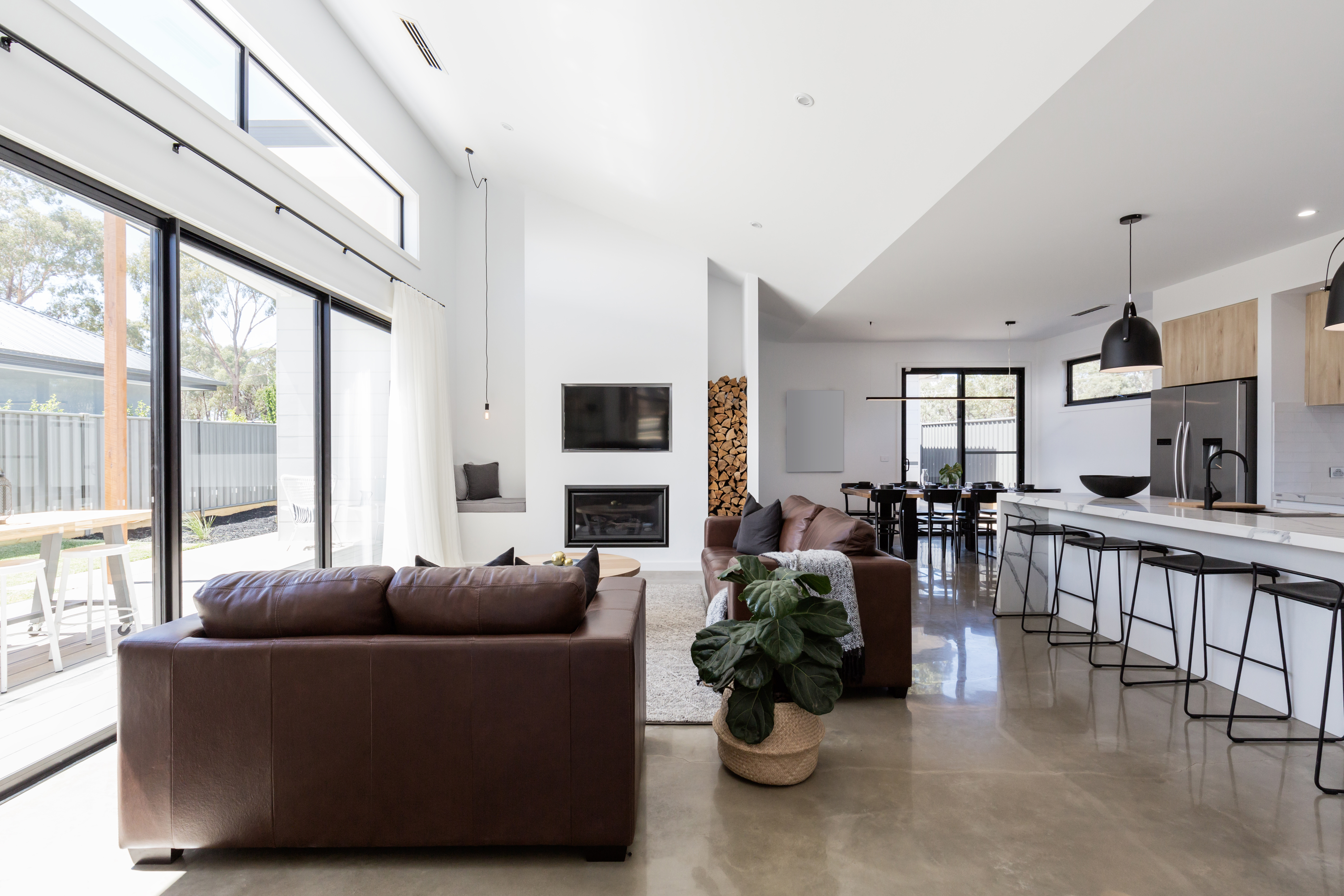

Carpet is among the best options for covering concrete floors because it’s wallet-friendly, ideally suited to camouflaging subfloor imperfections, and naturally adds cushioning to hard surfaces.
Picking the right flooring for covering concrete isn’t all about aesthetics—factors like foot traffic and whether an underlayment is necessary can also impact your decision.
Options like laminate and vinyl flooring are affordable and easy to DIY, but it’s important to remember that these options will get damaged more easily.
Tile can reinforce the concrete beneath and is relatively easy to repair.
Installing flooring over concrete can be trickier than it seems, so don’t hesitate to hire a floor contractor near you when in doubt.
Concrete floors are sleek and trendy and lend themselves to modern and industrial design, but they’re not everyone’s cup of tea. If you want to switch it up, you can install new flooring over your old concrete subfloor—but you’ll have to choose the right type of flooring for your space.
A flooring pro can help you consider options that balance out concrete’s downsides, like its vulnerability to mold and mildew growth or the way it feels hard and cold underneath your feet. The five best floors to install over concrete are carpet, tile, vinyl, laminate, and engineered hardwood.
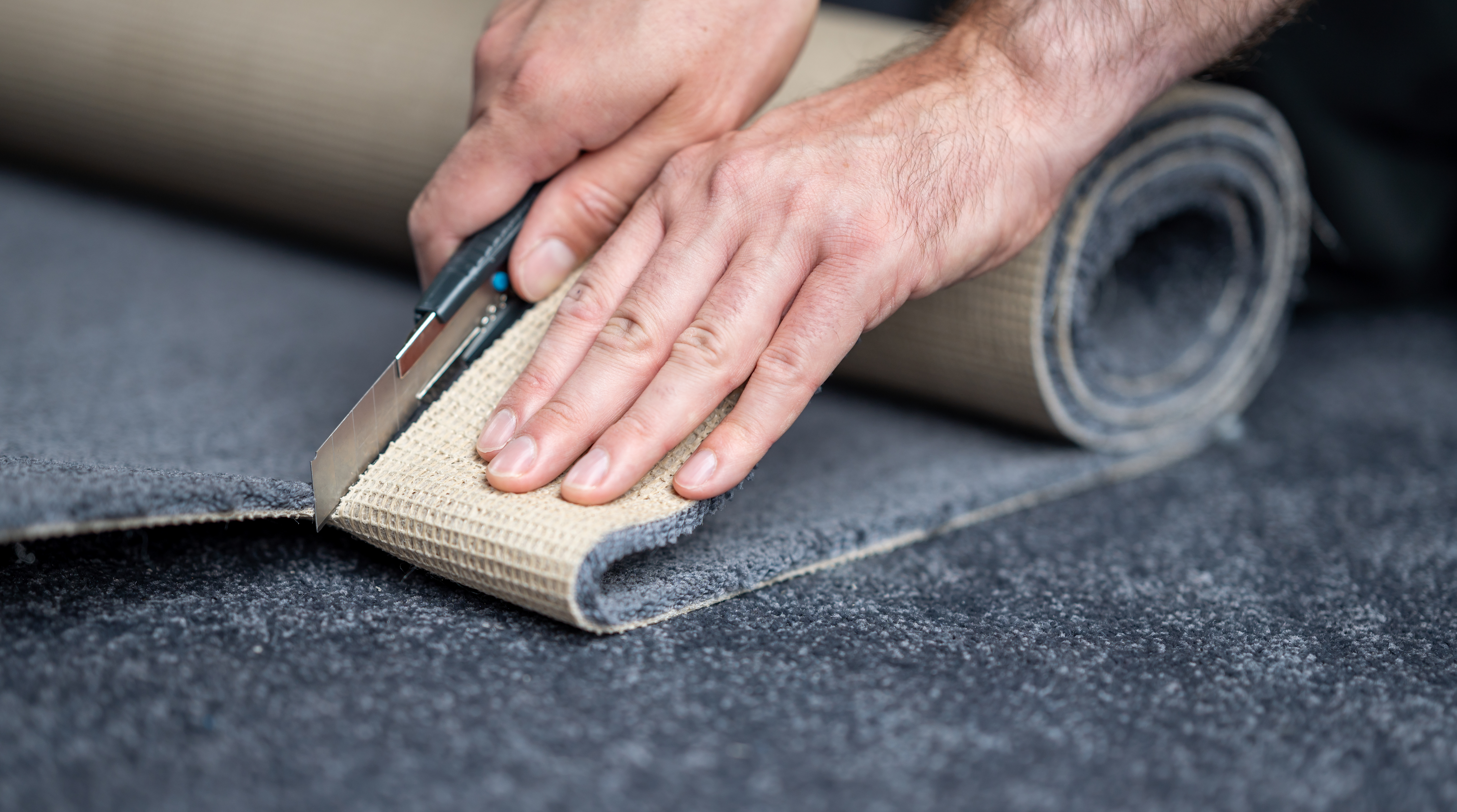
Carpets aren't just wallet-friendly—they provide a warm and comfortable floor to walk on, in comparison to the cold and hard surface of concrete. It also offers both insulation and cushioning (particularly if it’s a high-pile carpet). Homeowners praise carpet for its ability to reduce noise, which is helpful in larger rooms where sound echoes off the concrete.
Carpet is the most forgiving for subfloor imperfections. It can be laid over plywood seams, divots, or raised areas, as the thickness of the padding and carpet will help hide these flaws.
To install carpet correctly, you’ll need to install padding with a moisture barrier. Carpet is susceptible to moisture damage, and concrete floors contain moisture due to their porosity. You’ll also need to clean them more often than other floors, since dirt and grime can build up in the fibers.
| Pros | Cons |
|---|---|
| Comfortable on the feet | Susceptible to moisture damage |
| Insulating | High maintenance |
| Reduces noise | Shorter lifespan (5–15 years) |
| Budget-friendly | Prone to staining |
Best for: Cozy spaces like a bedroom or living room
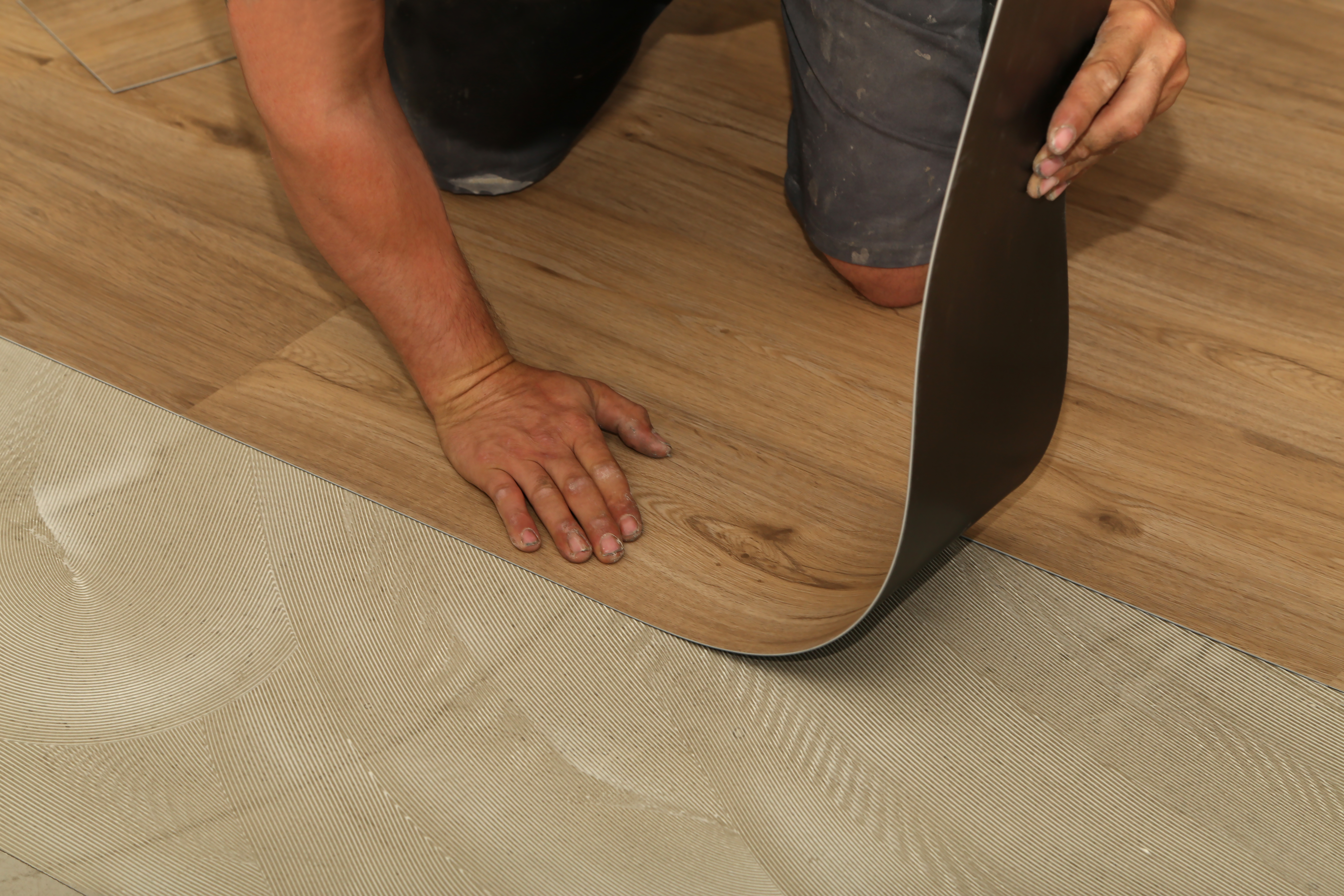
Stone and natural hardwood aren’t practical options to lay over concrete because of the issues with moisture, but vinyl flooring can give you a similar look. Vinyl flooring, especially luxury vinyl planking (LVP) and luxury vinyl tiles (LVT), is often regarded as the best flooring to install over concrete. It’s highly durable, relatively affordable, easy to install, and waterproof or water-resistant, depending on the type.
You can install vinyl flooring directly over concrete, but including an underlayment (a type of padding that goes under your flooring) is ideal for comfort and insulation. If you want to reduce the cost of your new floor, choose a DIY-friendly peel-and-stick vinyl—but keep in mind, it’s less durable than luxury products.
| Pros | Cons |
|---|---|
| Waterproof or water-resistant | Difficult to repair |
| Can be installed directly over concrete | Can potentially emit volatile organic compounds (VOCs) |
| Low-maintenance | Shorter lifespan (5–20 years) |
| Budget-friendly and DIYable | Quality varies drastically among different types |
Best for: DIYers looking to roll up their sleeves
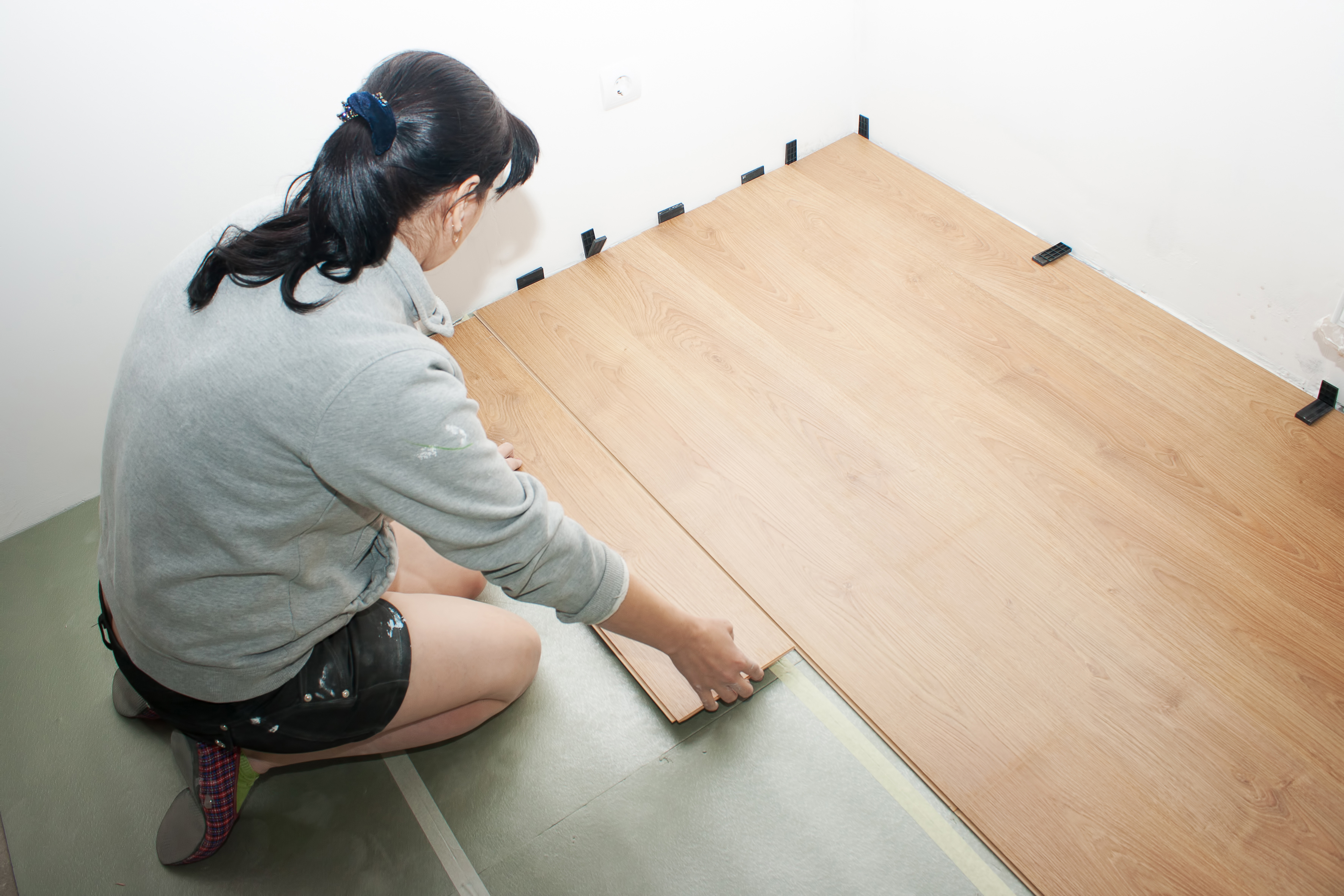
Floating laminate flooring is a popular option to install over concrete because it helps manage changes in humidity without warping or buckling. This is ideal since concrete holds excess moisture, and laminate is only moderately moisture-resistant. Floating floors also help hide minor imperfections in the floor underneath.
Beyond that, laminate is affordable, easy to install, and available in multiple varieties. Compared to vinyl flooring, it has superior scratch resistance and is more comfortable to walk on without extra padding, making it a great option for high-traffic areas.
| Pros | Cons |
|---|---|
| Scratch-resistant | Not fully waterproof |
| Easy to install | Can’t be refinished |
| Budget-friendly | Not biodegradable |
| Low-maintenance | Can chip and get slippery |
Best for: Homeowners on a budget
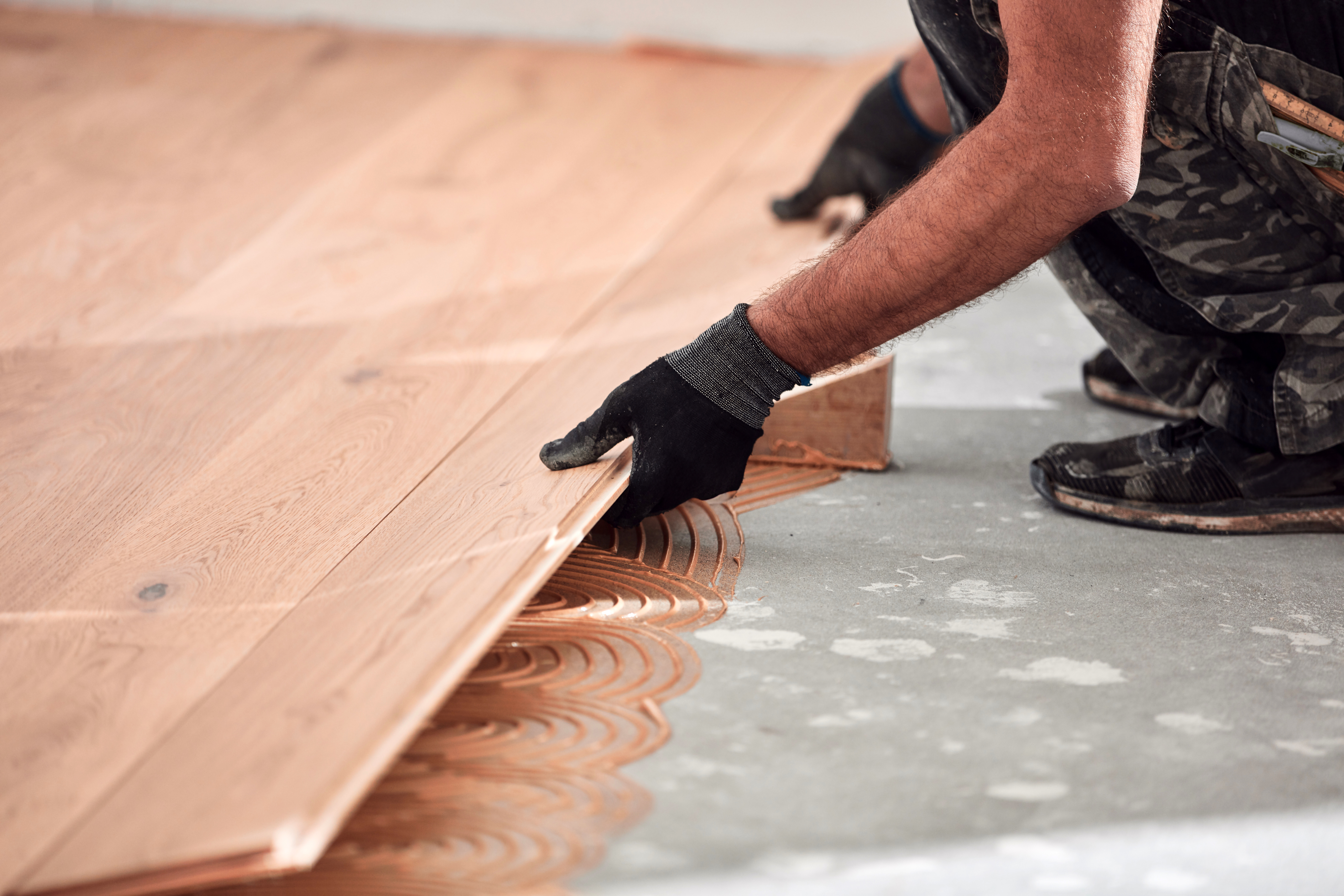
Engineered hardwood flooring gives you the desirable look of hardwood, but it’s less prone to warping when faced with the excess moisture of a concrete subfloor. This is because it consists of only a thin layer of natural wood (the veneer) over plywood or high-density fiberboard. You can also choose a floating installation to ramp up the moisture resistance.
With engineered hardwood, you get what you pay for. It costs more than laminate flooring or vinyl, but it’s more durable and considered higher-end. It can last twice as long as most other options.
| Pros | Cons |
|---|---|
| Same look as natural wood | Not fully waterproof |
| Highly durable (20–30 year lifespan) | Higher cost than other options |
| Can be installed as a floating floor | Can only refinish it once or twice |
| Can add to the value of your home | Quality varies |
Best for: High-traffic areas like hallways, entryways, and living rooms
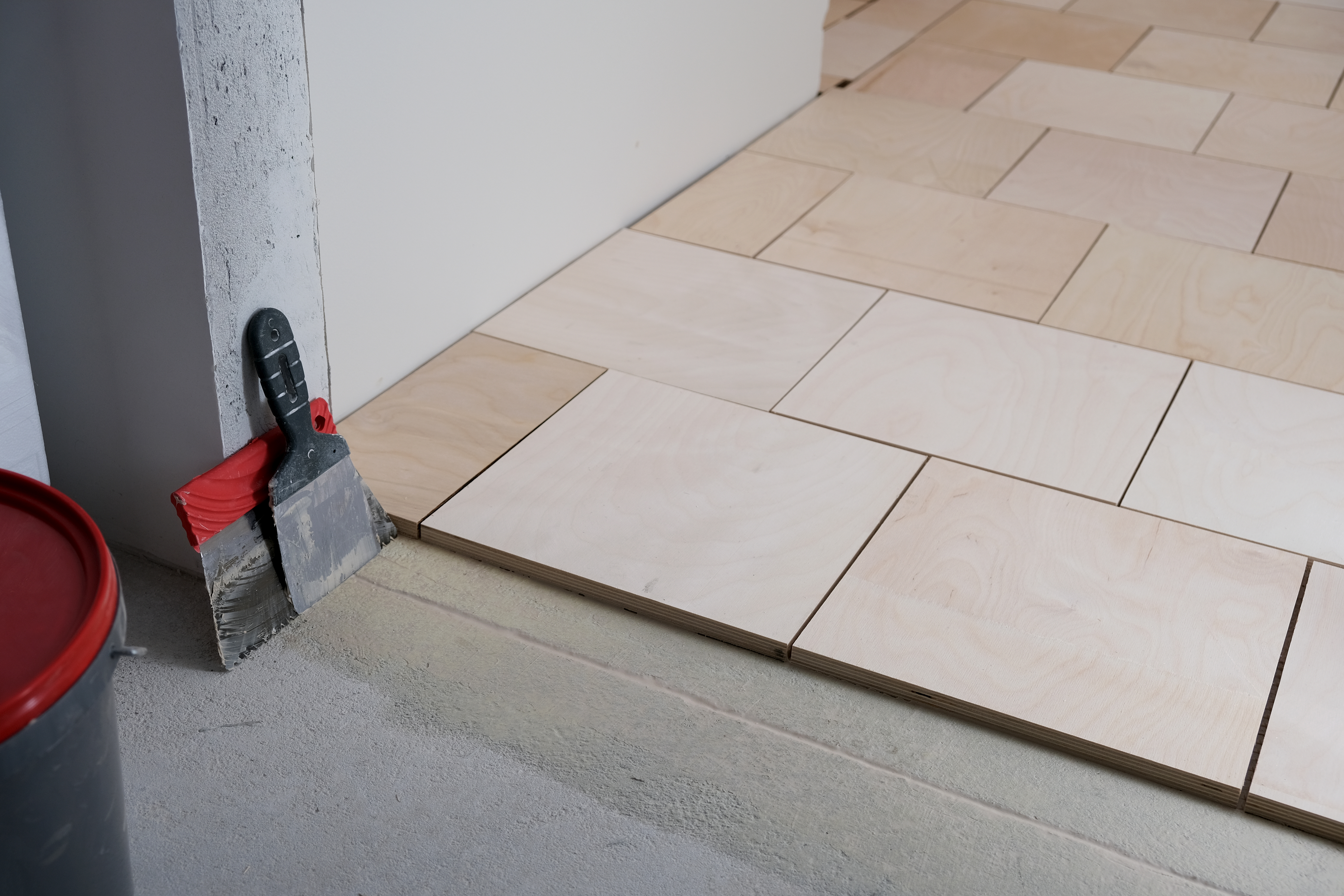
Since concrete is prone to cracking and issues with moisture, tiling can offer extra protection. This holds true when installing an uncoupling membrane, a type of underlayment that helps prevent loose or cracked tiles. It has some of the same benefits as concrete, but it has much more aesthetic versatility. It’s durable, scratch-resistant, and easy to clean and repair by swapping out broken tiles.
Ceramic and porcelain tile are commonly used in basements and kitchens, largely because of their affordability and water resistance. Options like natural stone give bathrooms or kitchens a high-end touch. You can choose a larger tile to keep your new flooring costs down.
| Pros | Cons |
|---|---|
| Aesthetically pleasing | Difficult to install |
| Highly durable and water-resistant | Can be slippery |
| Low-maintenance | Prone to cracks and chips |
| Easy to repair | More expensive than other options |
Best for: Areas prone to excess moisture like basements, bathrooms, and kitchens
It’s a good idea to hire a flooring contractor near you for installation. This helps ensure you choose the best type of flooring for your home, that it’s installed correctly, and you don’t damage the concrete underneath. If you’re going the DIY route, consider a few different factors that will impact your choice and the overall process:
Your floor has to withstand foot traffic: Concrete is found in high-traffic areas, so you’ll need to pick durable flooring that can withstand lots of wear and tear.
Make sure your floor is level: You’ll need to level your concrete before you can install flooring. This is very important if the flooring is going directly over the concrete. A floating floor, which has more leeway, may allow you to get away with some unevenness.
Cushion may matter: Concrete floors are harder than other surfaces. If you choose a material without much cushioning, like a glue-down vinyl plank floor, you will feel the hardness under your feet. If you want a floor with some cushioning, opt for a floating floor or carpet. It’s all down to your personal preference and needs.
Don’t forget the underlayment: Most of the time, it’s ideal to install an underlayment between your concrete and the flooring. Moisture barriers help combat concrete’s susceptibility to moisture.
From average costs to expert advice, get all the answers you need to get your job done.
.jpg?impolicy=leadImage)
If your subfloor is damaged and needs replacing, expect the project to require a professional assessment and the proper materials.

How much does marble flooring cost? We’ve got the answers about marble cost per square foot, types of marble, DIY cost, and more.

Updated flooring can make any room in your home feel brand new. Explore flooring installation costs in St. Louis, MO, from materials to labor costs.

Allowing laminate flooring to acclimate prior to installation can lead to the best results. Here is how to do it.

If you suffer from allergies or asthma, there are some flooring choices that can make being in your home more comfortable—and there are some that do not.

Learning how to install transition strips in doorways makes the transition between rooms smoother and protects the edges of the flooring.